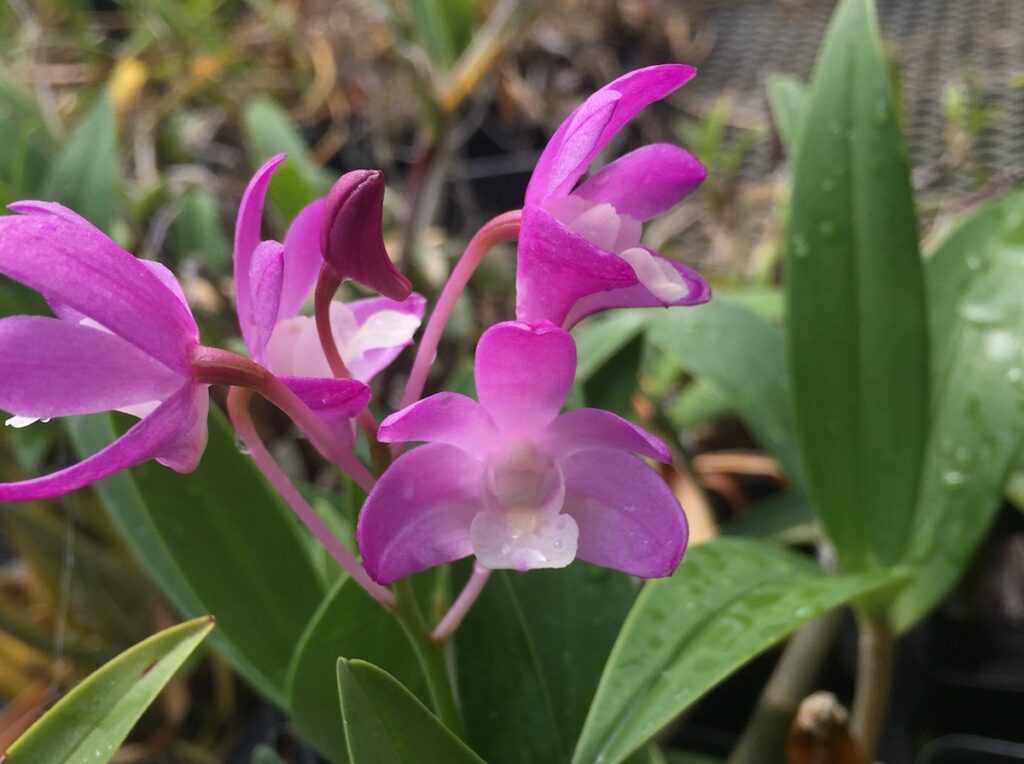1) kingianum var alba, regular form
This is a short-caned is to be the most common type of kingianum var. alba. Flowers are pure white, and a just a bit smaller than the typical pink color form.
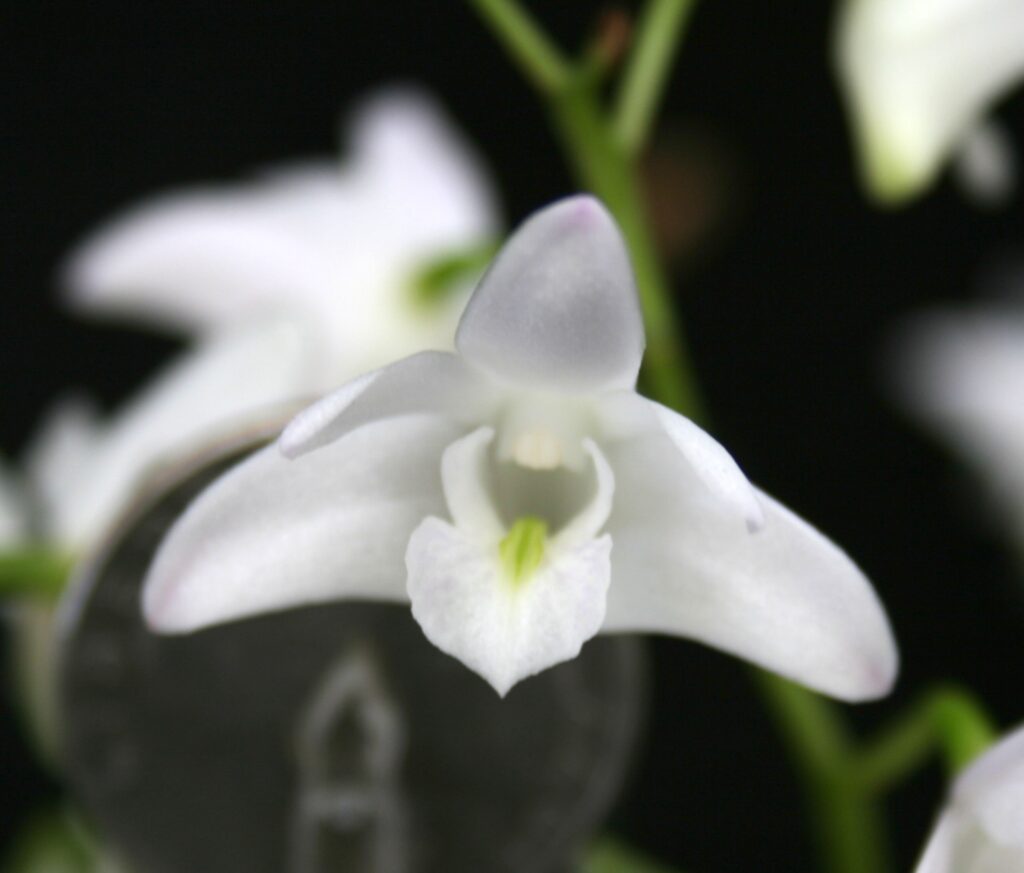
2) kingianum var. alba, long-cane form
This long-cane variety makes alba flowers more or less like the more common short-cane variety.
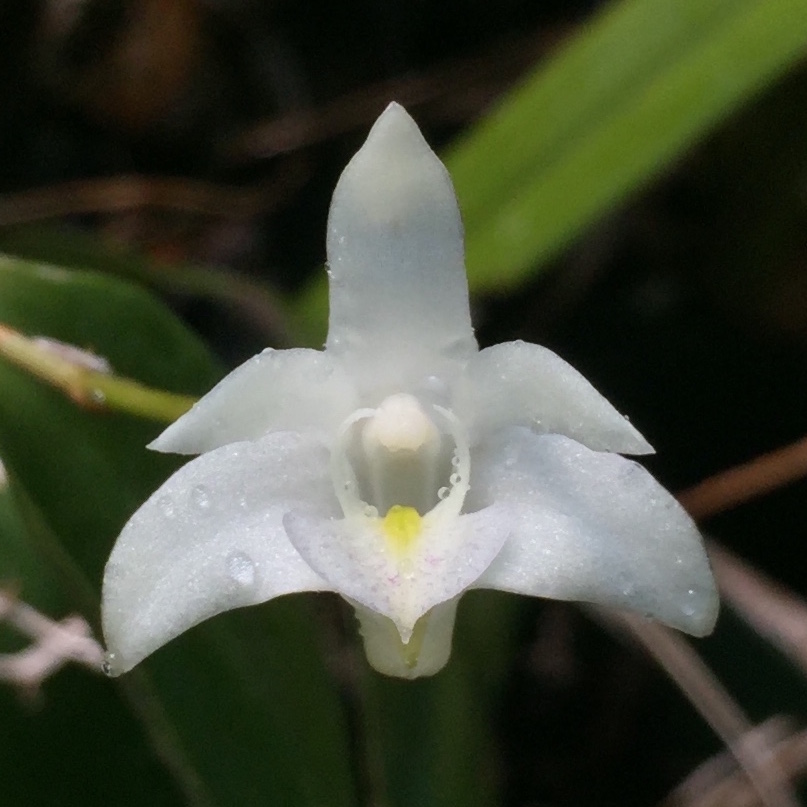
3) kingianum var. alba (cream-colored flowers, long olive-colored canes)
No picture of this one available at the moment, but it is very interesting for us kingianum collectors as the long olive-colored canes are not common at all. (Will add a photo of the canes in the next few days, hopefully). The flower itself is not pure white, but more cream colored.
4) kingianum var. silcockii (kingianum var. semi-alba)
This is the most spectacular and rare form of Den. kingianum. The finest specimens are pure white but with a deep-purple lip. They are very hard to find, and we’ve been accumulating different specimens over the years. When an orchid type is called semi-alba, it means that the petals and sepals do not express pigmentation and are pure white (or yellow/green), while the lip is colored.
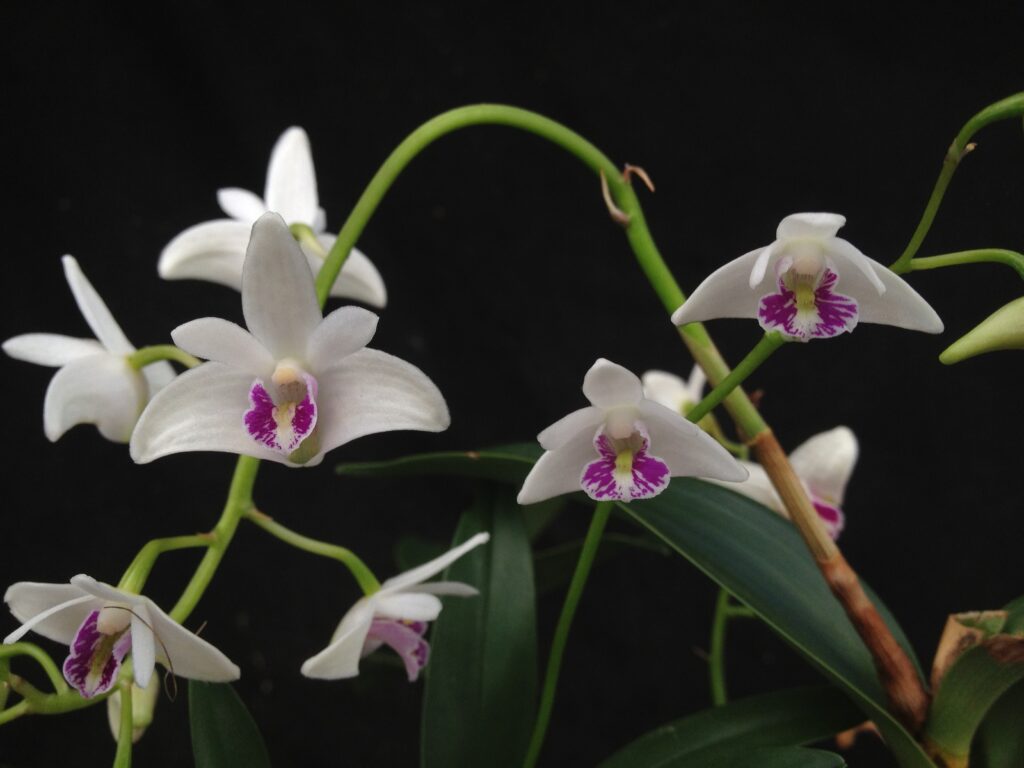
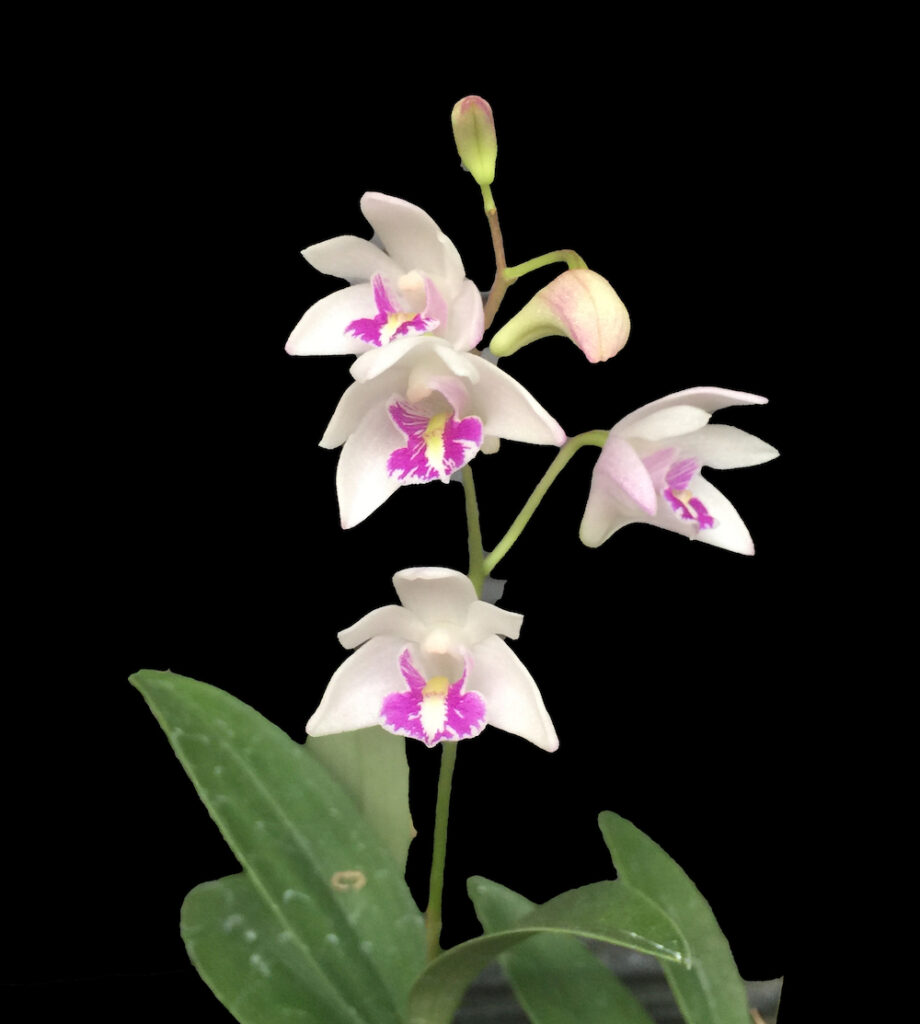
5) kingianum ‘Nugget’ AM/AOC
‘Nugget’ is the largest Dendrobium kingianum flower that I have ever seen. It received an AM (Award of Merit) not from the AOS (American Orchid Society) but from the AOC (Australian Orchid Council). Since kingianum is native to Australia, it’s a good bet that they see a lot of very fine specimens there. In the photo below, the left flower is ‘Nugget’, and the flower on the right is our standard/regular kingianum. Photos rarely do orchid blooms justice, and this is no exception, as ‘Nugget’ is just astounding in size!
On top of that, ‘Nugget’
If you want a division (or keiki), you’ll likely need to go on our waiting list.
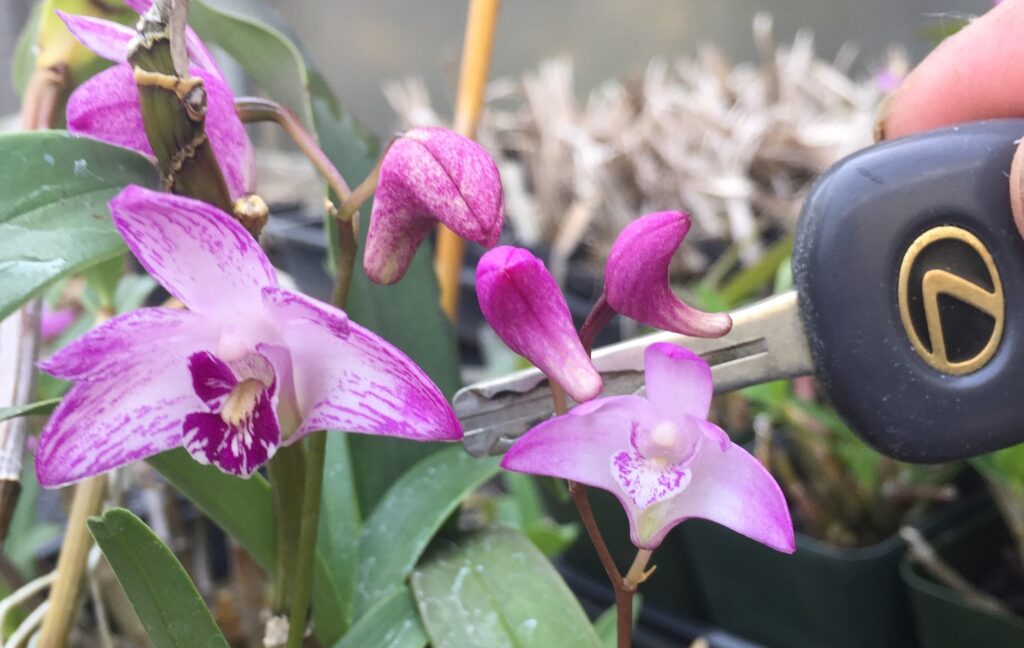
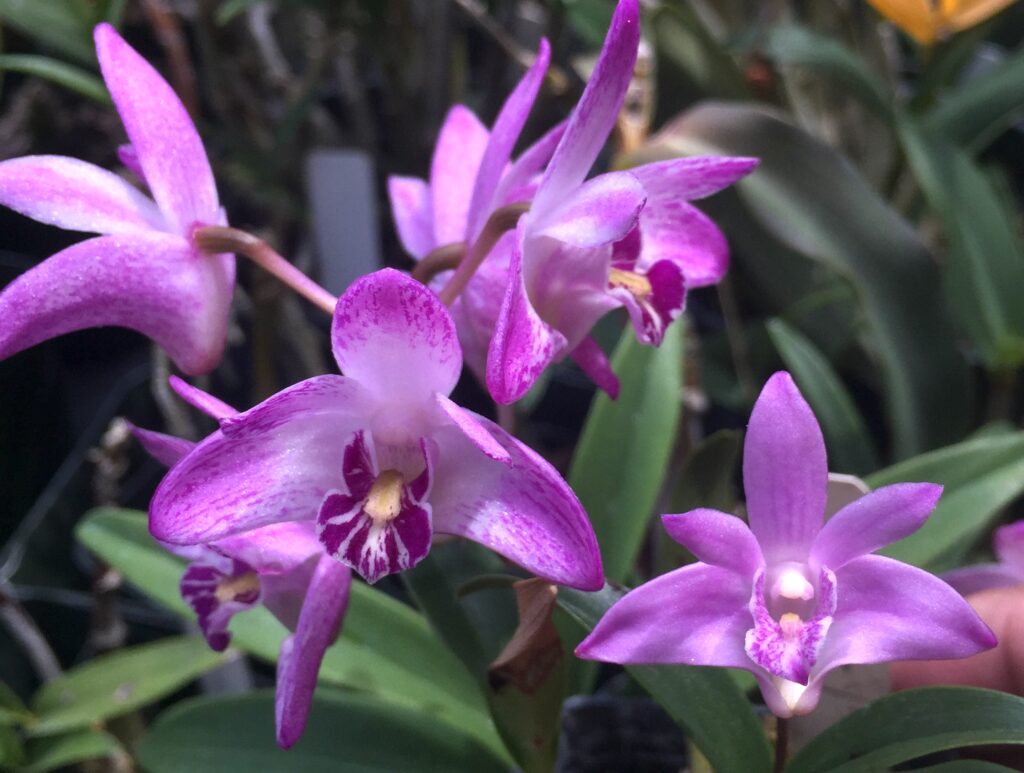
5) kingianum ‘Barney’
One of the challenges of collecting orchids is picking suitable names for them. One season a pure purple/mauve kingianum bloomed; we have several varieties that bloom out with petals/sepals all one color, but all have been darker or more intensely colored. Having one that bloomed a lighter shade was exciting, since the differences are what we’re after as kingianum collectors (or collectors of anything). I didn’t have a clever name for it, but the color reminded me of Barney the purple dinosaur character on TV shows, and the name stuck. (It’s not one of my top naming successes, I’ll admit.) See above and below for photos of ‘Barney’.
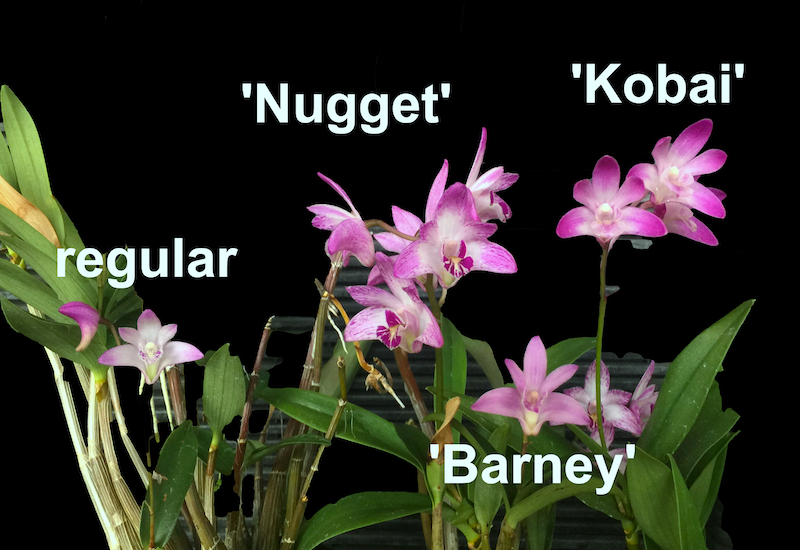
6) kingianum ‘Kobai’
While ‘Nugget’ produces the biggest kingianum flower, ‘Kobai’ is very, very close! (See montage photo above)
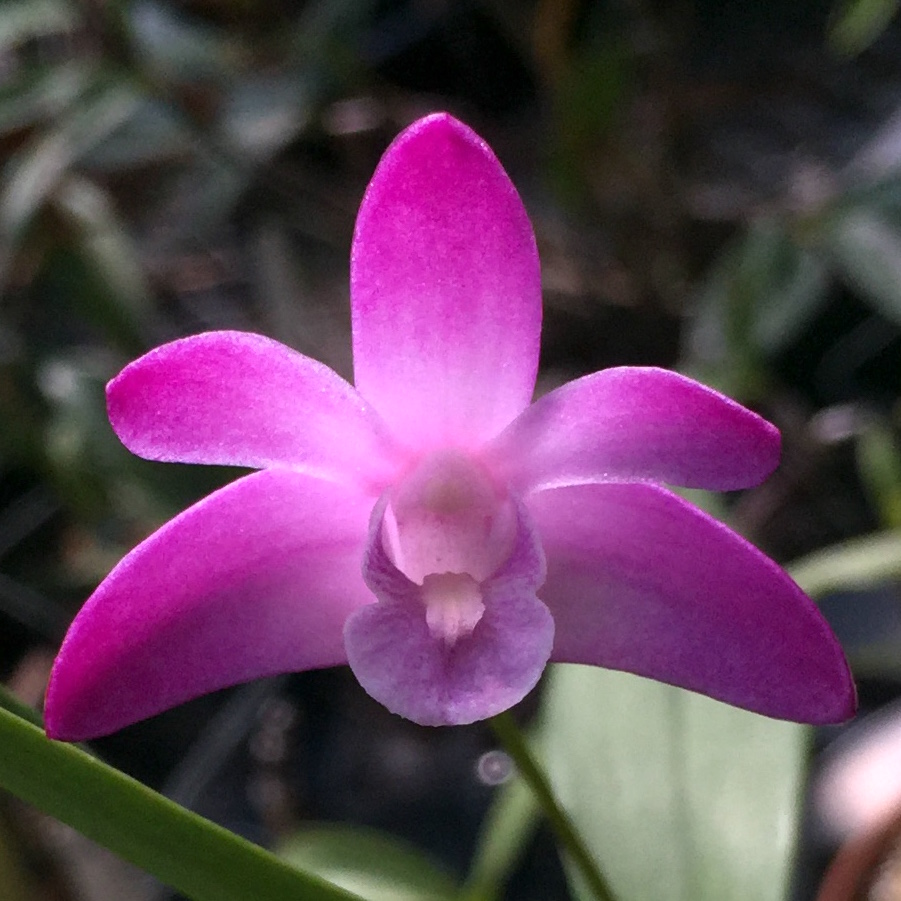
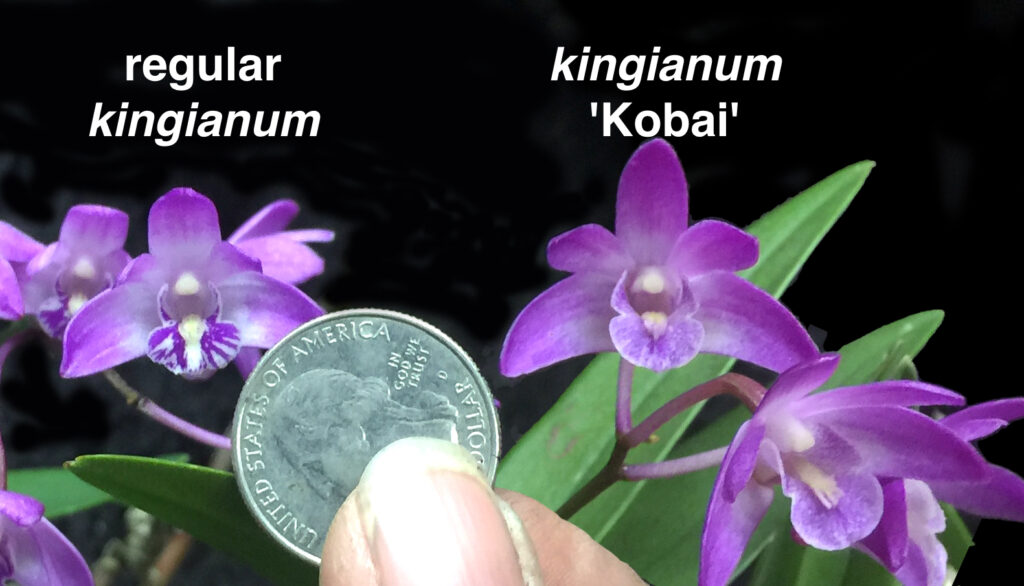
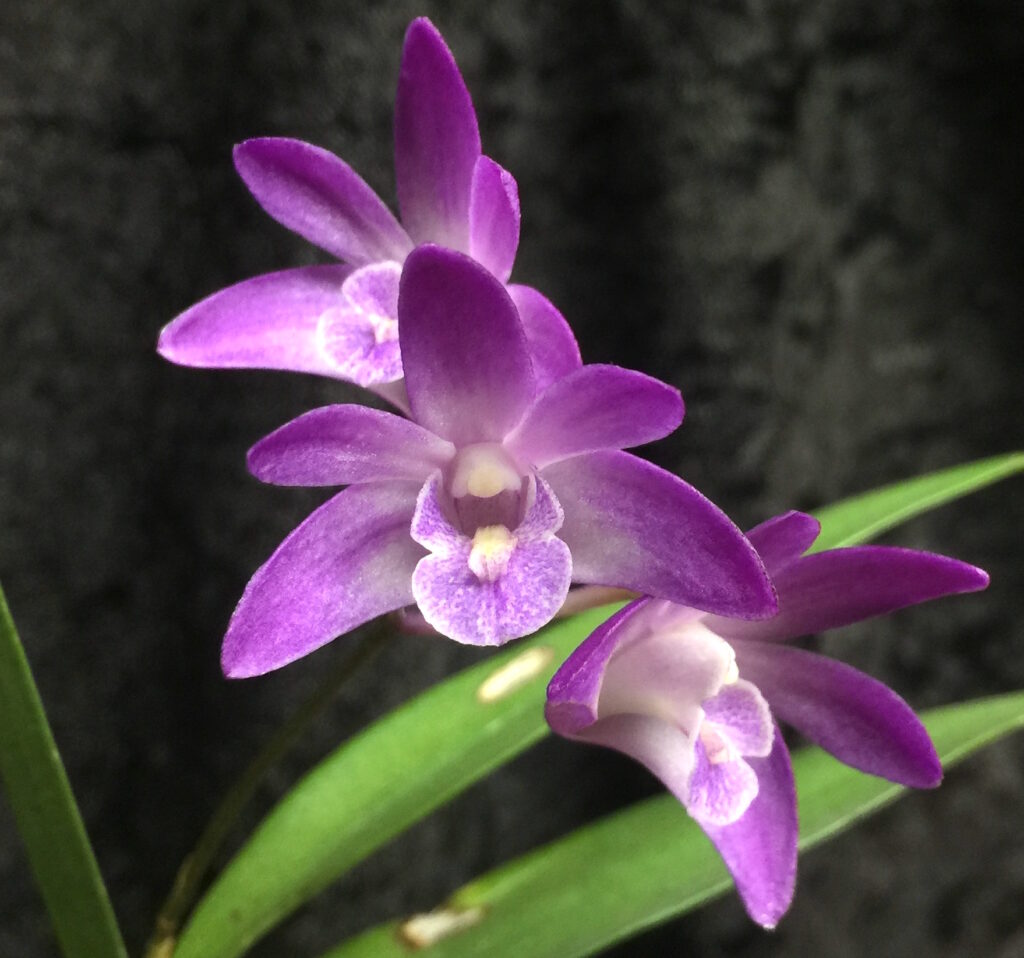
7) kingianum ‘Full Purple Jacket’
A very nice pure purple kingianum. A worthy addition to any collection.
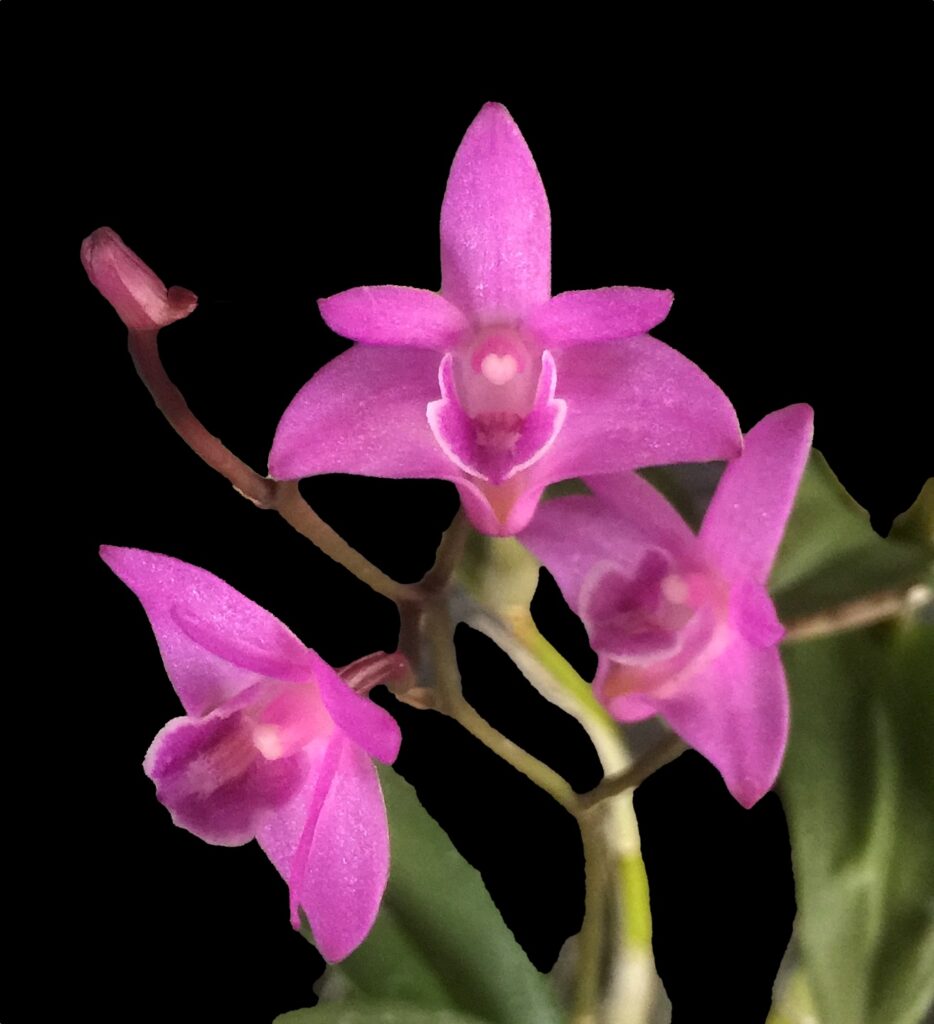
8) kingianum ‘Outlier’
A very dark form. We’ll be breeding with this one in the future!
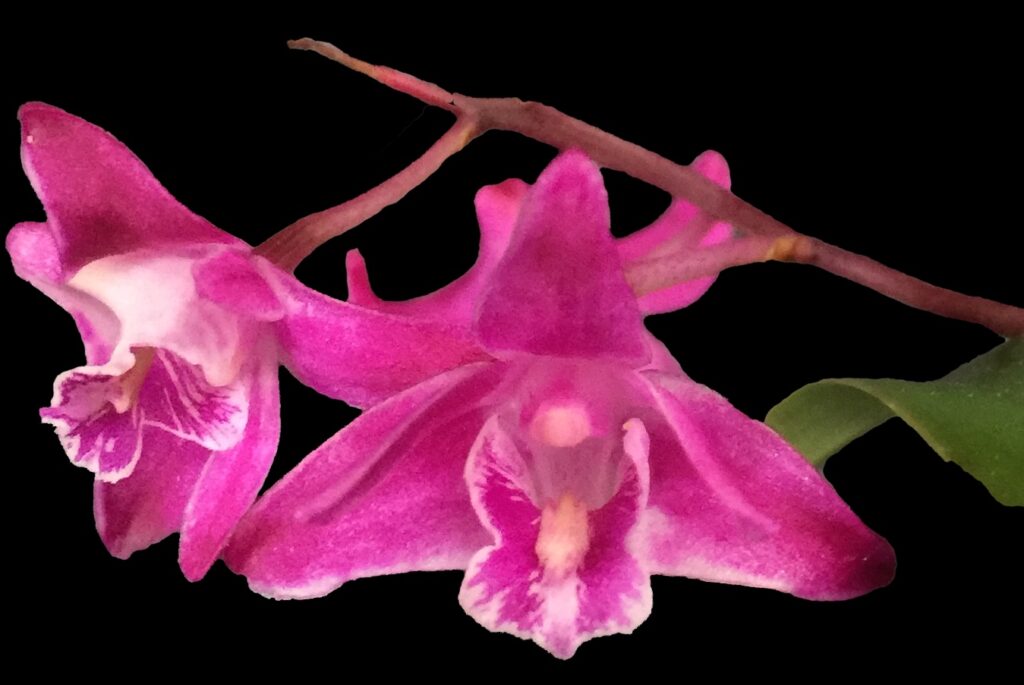
9) kingianum ‘Streaker’
A lovely “streaky” form of kingianum. Very hardy and fast-growing as well!
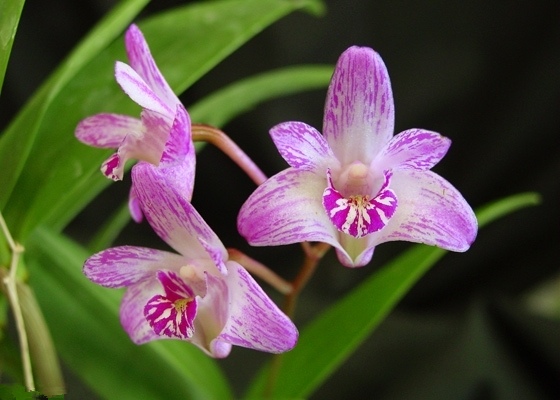
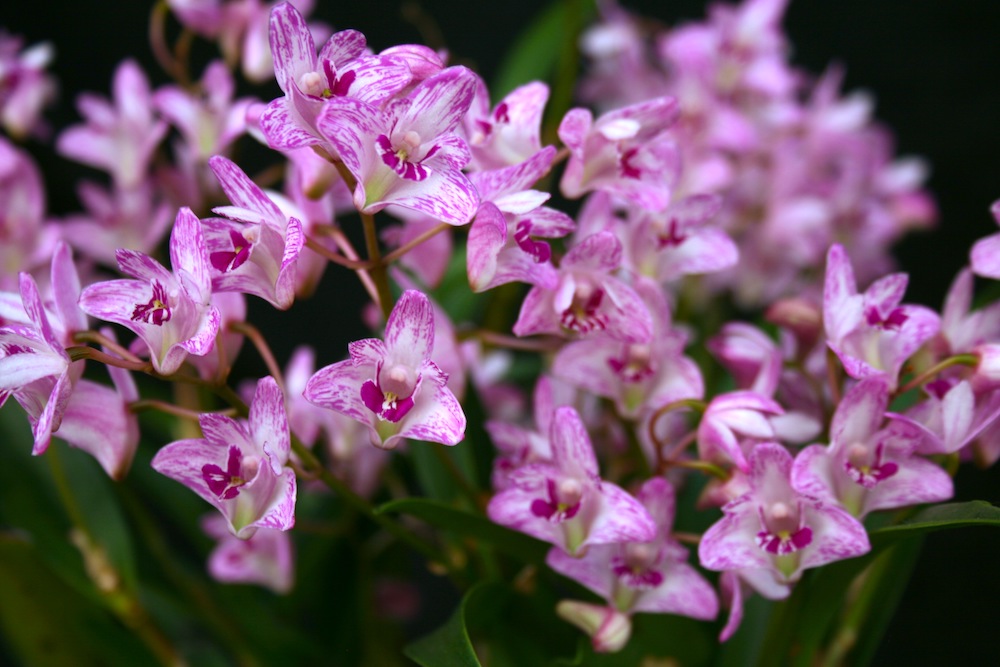
10) kingianum ‘Tipsy’
This was a real find. We didn’t have any in the collection where colors were concentrated at the tips of the flower, so when this one bloomed, it was cause for celebration.
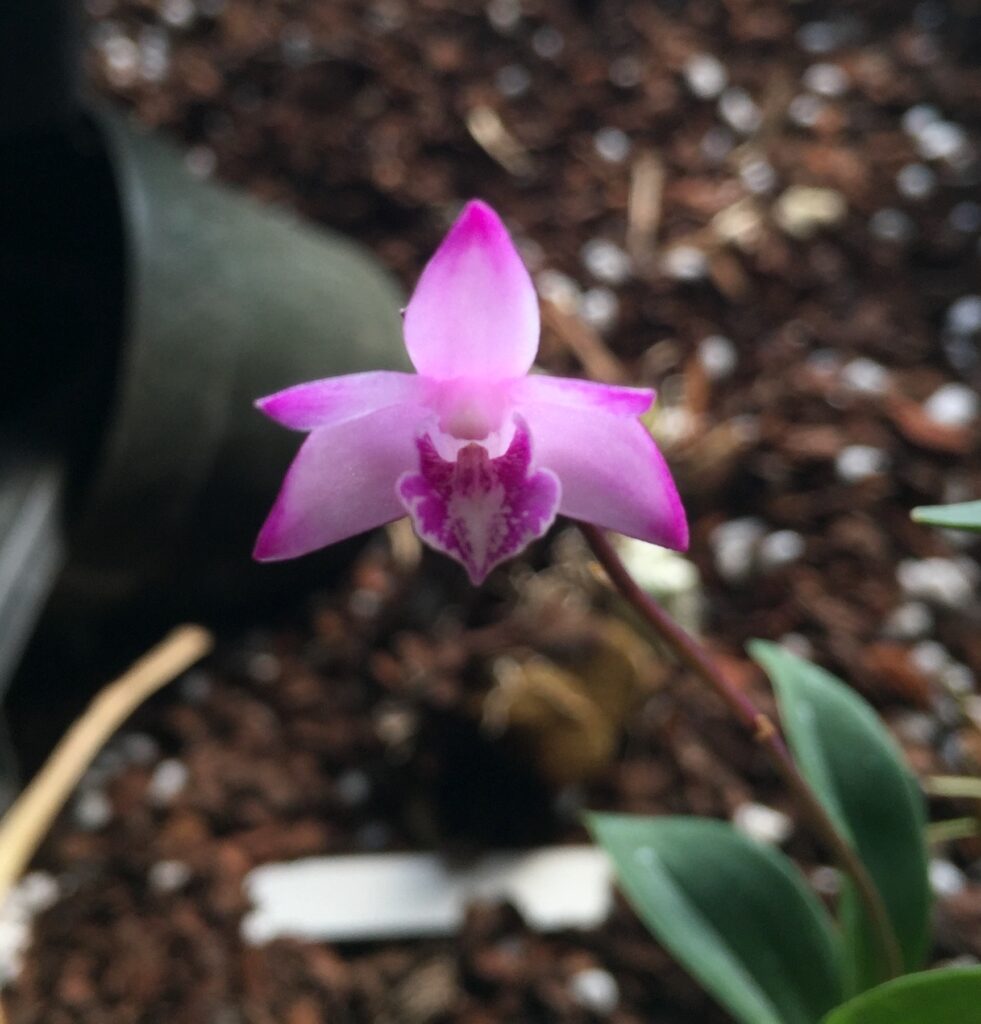
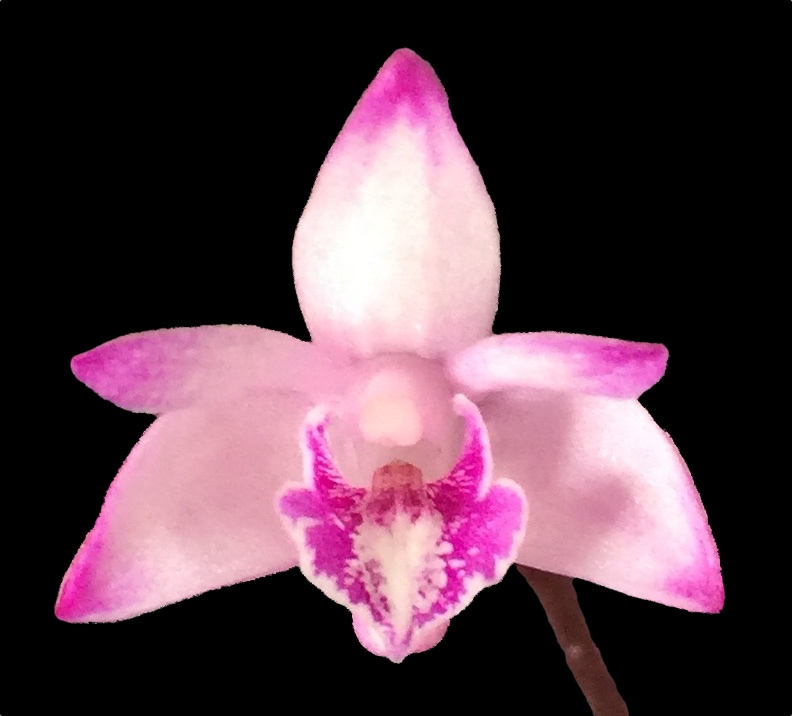
11) kingianum(*) ‘Kurvaceous’
This is one of the standouts of our collection. I’ve put an asterisk by the kingianum part of the name, as I’m not completely sure if it’s a pure species, or a hybrid. Three factors make me lean towards species, rather than hybrid:
- The size of the flower is well within the range of other kingianum species varieties. This is a weaker argument, as Den. delicatum is a naturally occurring hybrid of kingianum and speciosum, and has flowers within the size range of kingianum flowers.
- The rate of growth is consistent with kingianum species. The Australian kingianum hybrids we’ve grown seem to grow slower than kingianum species plants.
- The shape of the flower is unlike other Australian kingianum hybrids, which tend to have pointier flower tips, rather than curved ones. The “curvier” flower tips are more prevalent on the kingianum species plants we have, rather than, say, speciosum or even delicatum, so it is not too much of a stretch to expect that some specimens of kingianum might have extraordinarily curvy flower tips, like ‘Kurvaceous’.
